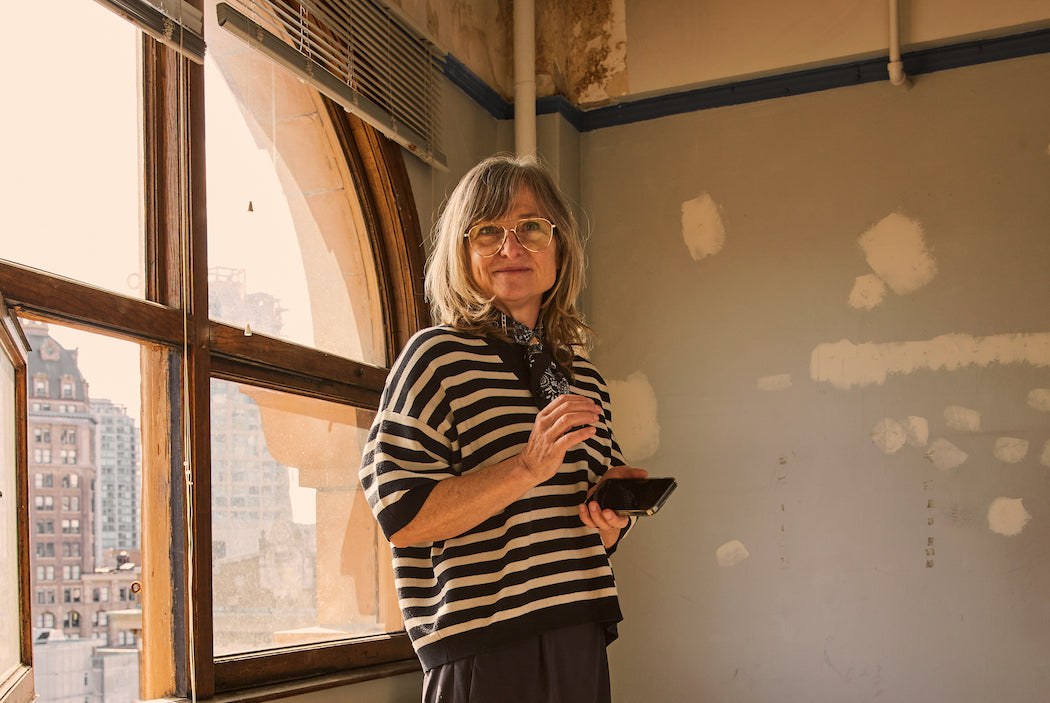Nobody joins a cult on purpose.
They join what they think is a community, a school of thought, a self-development program, a new way of living; they are often seekers, idealistic and hard-working. They might believe they are embarking on a journey of self-actualization that will in turn make the world a better place.
That was me when I was 27. Eager, ambitious, and ultimately naive. I certainly didn’t think I was joining a cult. It was called Executive Success Programs—or ESP, now known infamously as Nxivm—and I thought it was my crew. I was blinded by my own drive and by the vision of what I believed we were building. I thought I was happy there, in my home of so-called humanitarians.
It took me 12 years to wake up.
But not before my indoctrination led me to participate in a sadistic ceremony—one that left my body physically branded.
It was sold to me as a secret sorority of women’s empowerment, and joining its coveted circle meant getting a tattoo. Or so I was told. When I showed up at the ceremony, I found out they were actually going to use a hot cauterizing iron to viciously burn a symbol into my skin.
I’m often asked why I didn’t leave right then and there. And to be shamelessly transparent, I would probably wonder the same thing had I not lived through it myself. But this kind of emotional and cognitive manipulation happens over time; it starts small and carefully builds. My internal compass of intuition had been slowly dismantled over the years. The organizers blackmailed me in order to control me, and carefully conditioned me to believe that my inner doubts were simply fears I needed to overcome in order to be strong. As though my commitment was my power, and leaving was an act of weakness.
These beliefs had become ingrained in me, part of my new wiring; cult experts call this resocialization. So when I was faced with the decision to flee, or to lie down on that sweaty table to prove my “strength” and “lead by example” for the other women attendees, I convinced myself to do the latter. “Master, would you brand me?” I asked, as instructed (a tactic that, I know now from court transcripts, was implemented to make the whole thing seem consensual). “It would be an honor.”
I laid myself down on the sticky massage table. Eyes shut. Heart pounding. I was not given anesthetic, so I tried to lie as still as possible to prepare myself for the oncoming pain. Then it happened—the white-hot tip of the device sliced into the flesh on my pelvis just below my bikini line. And just like that, I left my body.
I went somewhere else, as if observing the scene from above—a trauma response called dissociation. It felt as though I was floating, hovering above myself; in my mind, I tried to connect with images that were safe, like the birth of my first son. Connecting to the love I felt for him helped me override the acute pain.
What most people will never understand is that this horrific act of torture was conducted under a veneer of love. When it was over, one of my friends held me in her arms and we wept. She cooed in my ear that I had done well and that she was so proud of me. Still dissociated from the pain, I was proud of myself, too. I had done it. I was brave.
I would later learn that this trauma bonding was intentional, too, deployed to bring us closer together so that we would never leave the group. So that we would stay unwaveringly loyal.
In the days following the ceremony, I tended to my wound with Polysporin and bandages. The open flesh eventually closed, creating angry, raised keloid lines (after years of oils, creams, and treatments, they finally settled into thin white scars). I had been told that the symbol was a tribute to the four elements and a Latin representation of the chakras.
It was just over a month later, with this “initiation” ceremony still lingering in my mind, that I started to notice other questionable things happening within the organization. My doubts lead me to share information with people I trusted, and together we realized my scar actually depicted the initials KR, embedded into a cryptic monogram and standing for Keith Raniere: the leader of Nxivm. My world began to crumble. I was in a cult—in deep.
Together with my husband, who was also a member but had not been branded, I escaped. We spent the following three years in a tumultuous, fervent, dangerous battle to expose Raniere and his inner circle, working with the FBI and a few other close friends who had managed to leave the group. In an instant, my entire life’s work had turned 180 degrees: from passionately building this thing to ferociously destroying it.
In October 2020, Raniere was sentenced to 120 years in prison. When I found out, it felt like I could finally breathe again. We were safe. But my healing had barely begun.
As the dust began to settle, I had to reevaluate my entire belief system and learn how to trust again. I had to face the deepest senses of grief and betrayal I had ever known. I had to figure out how to overcome PTSD, how to be okay in my own body—which, thanks to my scar, had become a constant physical reminder of my trauma.
After 12 years in that high-control group, followed by three years in full-on sniper mode working with the FBI, the time came to finally focus on myself. There were no more distractions. I had to be still.
My return home to my body is ongoing. It’s not static; it’s not something that I can just decide to do. It’s a process that ebbs and flows.
Some days I am nowhere to be found—hovering over myself, floating again. I can see my body from above: bustling around Vancouver, completing housework, recording voice overs, pushing my toddler on the swings. Still, in other fleeting moments, I can find myself. I feel grounded, rooted into my skin and my physical space. Usually this happens during the four minutes of yoga’s resting pose, my body stretched and basking in the afterglow of self-care. In those minutes, I sink into myself. My focus shifts internally to the dome of the universe inside my eyelids; spirals like the Pink Floyd light show they used to put on at Vancouver’s planetarium distract my monkey mind as I slip into the sea I call stillness.
Nothing and yet everything is in this stillness. I feel the pressure of the yoga mat, but it’s not the floor—it’s a regal pyramid in Mexico that I visited years ago. A vortex of energy pushing up from beneath, supporting my breath and propelling me into the vastness of the atmosphere. My limbs envelop the earth and we are one. There is no distinction. Just matter. Ease. Peace and expanse.
And then just as suddenly, class is over, and I am snapped back to so-called reality. My to-do list knocks on the door and demands attention. I try to stay in that space for a few more minutes, but it’s fleeting. I try to bring this practice to my daily life: carving more time for yoga, long forest walks, and meditation. But it’s hard. I have not fully healed. Maybe I never will.
I have come to accept that the reclaiming of my body, my mind, and my purpose is a never-ending task. I take my life back slowly, and with intention.
In 2019, I decided to have plastic surgery to get the Nxivm brand permanently removed from my body. Now, every time I run my fingers over my four-inch scar—the crooked line that remains from where my flesh was cut open to extract his initials, and then skillfully and mindfully stitched closed again—I wake up. I am free. I am autonomous. I am stronger than they ever expected. They underestimated me, and I underestimated myself. I am resilient and unshakable. The knowledge I have of myself, of my true character, brings me back home. I am as solid as that pyramid. I am whole again, even if I can feel this truth only for a moment.
This article appears in Natural Habitat Print Issue No. 1. Order your copy here.












